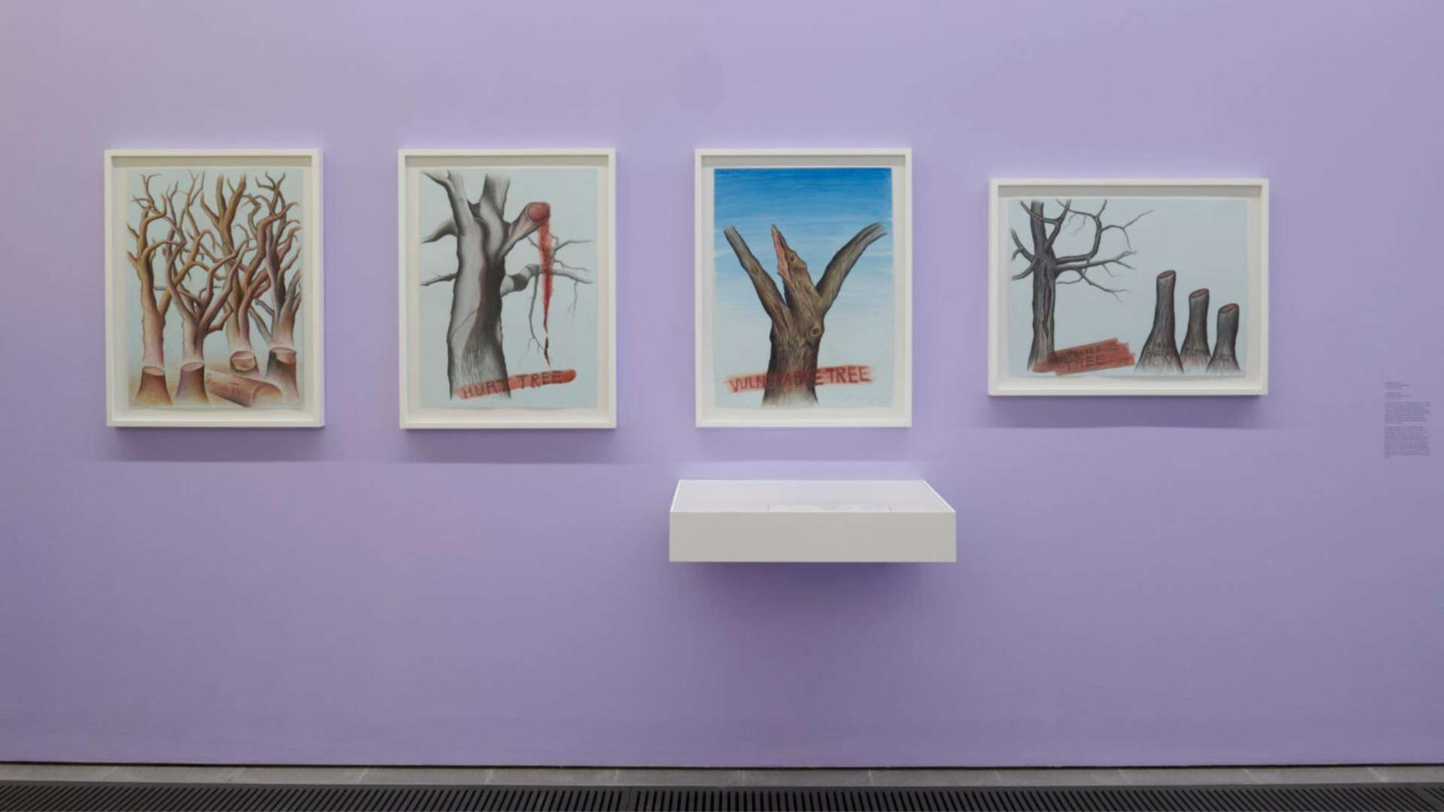
A new landmark retrospective in the UK combines preparatory drawings with the monumental works of art they would become.
The scale and ambition of feminist art Judy Chicago at the end of the 20th century, they are well known, from her ceremonial banquet "The Dinner Party" (1974-79) to the monumental works associated with the "Birth Project" (1980-85), such as "In the Beginning," a 9-meter-long film. These bold works were some of the first to focus on themes that are an everyday reality for many women, but which have long been rendered invisible by the monotonous creations of a male-dominated art world.
Now it's time to go behind the scenes and learn about its genesis. "Revelations" at the Serpentine North in Kensington Gardens, London, on display until September 1st, features rarely seen drawings and preparatory studies displayed alongside some of Chicago's best-known works. The creative process is brought to life through video interviews and audio recordings, including accounts from the original participants of The Dinner Party.
Although he has been the subject of several retrospectives in the US, surprisingly, this is Chicago's largest institutional solo exhibition in London.
In the gigantic drawing "In the Beginning" (1982), the pulsating lines take on a corporeal and topographical character, foregrounding a formal connection between women's bodies and the natural world. The work emerged from the accumulation of many experimental drawings. When these works are grouped together, we can see how the act of drawing itself is an endless conceptual exploration, perhaps why she once described it as "like breathing for me."
The plight of women under patriarchy is touched upon elsewhere in Shadow Drawings (1980s), a series of intriguing semi-figurative drawings that seem to pulsate with energy and remain open to interpretation. More recently, Chicago has been vocal in its call for action to address the climate crisis, and the drawings in "The End: A Meditation on Death and Extinction" (2012–18) bring us face to face with some of the most imminently endangered animals, reminding us of the grim reality behind our convenient lifestyles.
Examples from the "PowerPlay" series (1982-87) subvert the tropes of idealized masculinity in Renaissance painting, contorting men's faces into grotesque caricatures. It's a stark reminder that, in some cases, men pose a serious threat to women.
"I knew I didn't want to continue using the female body as a repository for so many emotions; it seemed like everything—love, dread, longing, disgust, desire, and terror—was projected onto women by male and female artists," Chicago said of the series. "I wondered what feelings the male body could express. Furthermore, I wanted to understand why men acted so violently."
A room in the Serpentine North pavilion was dedicated to Chicago's "Atmospheres," a series of site-specific performances produced between 1968 and 1974 that saw the artist experiment with pyrotechnics. She has since recalled how many male land artists "were trying to control the landscape or the experience in space," while her works aimed to "soften or 'feminize' the Los Angeles art scene of the 1960s, which was singularly inhospitable to women."
Also on display is “What if Women Ruled the World?”, created in collaboration with Nadya Tolokonnikova of Pussy Riot and the art and technology platform DMINTI. Visitors are invited to enter a participatory booth where they can record video responses to 11 questions, contributing to a global archive of responses that are then digitally linked. Questions like "would men and women be kind?" and "would elderly women be venerated?" invite participants to reflect on the nuances of an alternative reality in which femininity is celebrated and empowered, rather than repressed and ridiculed.
What if women ruled the world? Participatory Quilt, a large wall hanging featuring a patchwork of previous responses from participants in Mexico, Argentina, the US, and France, is also on display.
“Judy Chicago: Revelations” will be on display at the Serpentine North, Kensington Gardens, London, until September 1, 2024.
Source: Artnet News
